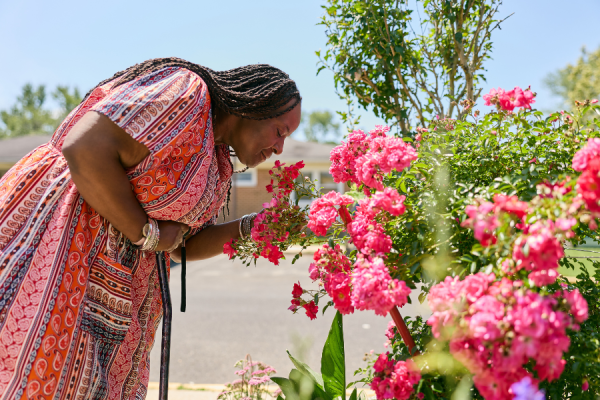These days, it’s not easy to keep up with Sheila D. Just a few months after a double lung transplant, this 57-year-old is power walking, cleaning her apartment, and laughing when her sister tells her to slow down.
These activities weren’t always possible. Advanced lung disease had slowed Sheila down, but care from the Temple Lung Center has made all the difference.
Worsening health limited Sheila’s independence
Sheila experienced pulmonary issues throughout her life. Growing up, she was active but had allergies and asthma. She faced pneumonia and bronchitis and later developed diabetes.
When Sheila was in her 30s, she was diagnosed with pulmonary sarcoidosis, a type of interstitial lung disease.
Her worsening health meant that daily tasks became increasingly difficult.
“It got to the point where I couldn’t do stairs,” Sheila says. “I couldn’t do more than four or five steps. I had to stop and rest.”
Working with her hometown pulmonologist in Vineland, New Jersey, Sheila began to use supplemental oxygen. But as time went on, she required more oxygen — and then the increased flow still wasn’t enough.
Eventually, Sheila began using a wheelchair. “I was too weak to stand,” she says.
These challenges impacted not just Sheila, but also her family. Her sister Brenda is Sheila’s caregiver.
“She had portable oxygen,” Brenda says. “But it wasn’t giving her enough oxygen, so we went to a hard tank. Then we had to get one with wheels because it held more, but within an hour, it was out. So we had to take three tanks just to get through an hour and a half of church.”
Both sisters worried that Sheila’s increasing oxygen needs could mean she’d need to enter a nursing home.
Sheila’s pulmonologist recommended treatment at the Temple Lung Center.
Expert care offered new hope
In January 2024, Sheila began working with Rohit Gupta, MD, FCCP the director of Temple’s Sarcoidosis Program, and a multidisciplinary team, including Parth M. Rali, MD, FCCP, a Temple pulmonologist who specializes in pulmonary vascular disease management.
She had experienced multiple hospital admissions and after establishing care at Temple, when she was admitted again, Drs. Gupta and Rali determined that pulmonary hypertension and right heart failure were deemed to be the major cause of her worsening condition. She was managed aggressively for this, but it became clear that she needed lung transplantation. After thorough evaluation, Sheila was added to the transplant waiting list.
As she waited for donor lungs, Sheila’s condition continued to get worse. She needed high-flow oxygen. Sheila was admitted to Temple University Hospital, where she stayed for three months.
Sheila and Brenda were impressed with the care Sheila received from her doctors, nurses and other care team members.
“They were awesome,” Brenda says.
